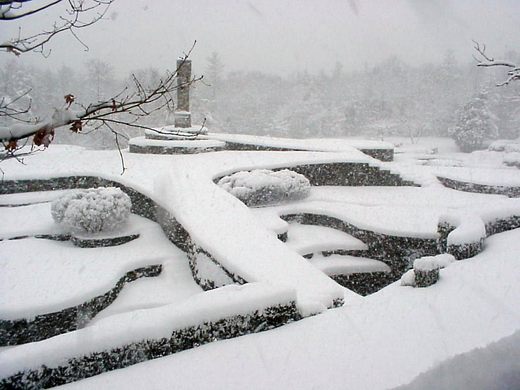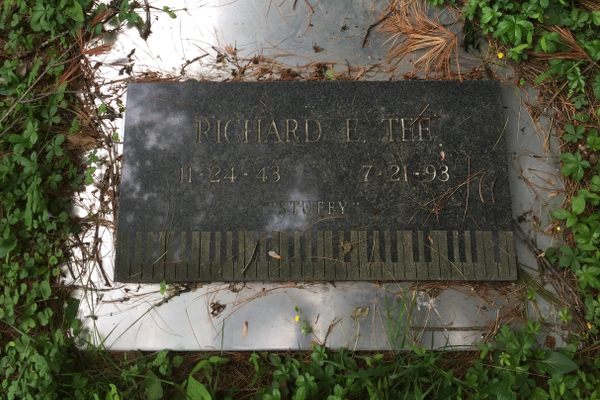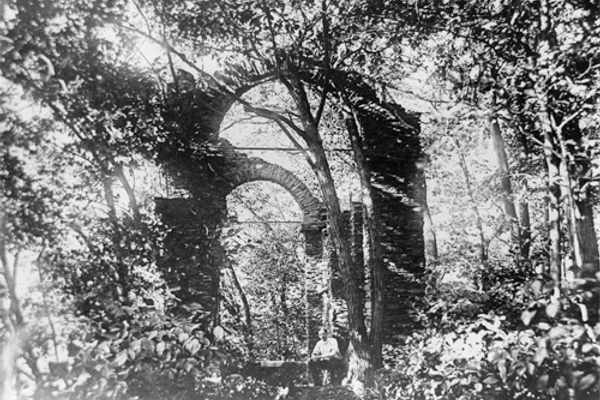Opus 40
One man's swirling six-acre monument of stone.
Nestled in the woods below the Overlook and Roundtop Mountains in the Catskills, Opus 40 takes the visitor by surprise.
In 1938, artist and sculptor Harvey Fite purchased the quarry as a source of stone to use in his own work. That same year, Fite—who was then a professor of the Fine Arts at nearby Bard College—was invited to Honduras by the Carnegie Institute to do sculptural restoration work. During his season of work in Honduras, Fite was awestruck by the dry-stone building methods employed thousands of years prior by the Mayans and was thus inspired to use the heaps of stone in his own quarry to create an outdoor gallery in which to showcase his own sculptures.
He began what would become his most ambitious work in 1939 by first diverting water from a spring within the quarry to create two large pools. Around these pools, he constructed curving walls connected by cobbled pathways and labyrinthine staircases. Over twenty years after starting his work on Opus 40, Fite realized that the scale of his stone landscape had begun to overwhelm his smaller sculptures and that the landscape had become a sculpture in its own right. He removed his figurative works from the main site, placing some of them, which still stand to this day, nearer his house on the eastern edge of the quarry.
For the next decade, Fite continued to refine, rebuild, and extend his earthwork, eventually installing the stately nine-ton, monolith at the work’s highest point. After his retirement from Bard College in the early 1970s, he built the Quarryman’s Museum on the grounds to house his private collection of folk tools and artifacts of the quarrying era. Around this same time, he finally gave a name to his masterwork. Fite jokingly said “Classical composers don’t have to name things, they can just number them Opus One, Opus Two, and so on.” Expecting that he would need 40 years to complete the work, it become known as Opus 40.
Fite died in an accident during the thirty-seventh year of his labors. And while some areas are certainly left unfinished, Fite’s stepson Jonathan Richards observes, “Opus 40 is as complete as it ever would have been. It was the product of Fite’s ceaseless vision, and could only have been stopped by his death.”
Today, the site is open to visitors thanks to Barbara Fite, Harvey Fite’s widow, who created a nonprofit group which still administers the site. A short monograph is screened on a loop in the admissions building where visitors can also visit the Quarryman’s Museum. Above the amphitheater within the quarry, visitors can use provided stones to construct their own homage to Fite’s work. Opus 40 was added to the National Register of Historic Places in 2001 and has been described in Architectural Digest as “one of the largest and most beguiling works of art on the entire continent.”
Know Before You Go
Hours vary. Check the website before visiting and secure tickets.






























Follow us on Twitter to get the latest on the world's hidden wonders.
Like us on Facebook to get the latest on the world's hidden wonders.
Follow us on Twitter Like us on Facebook